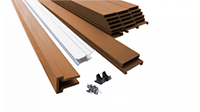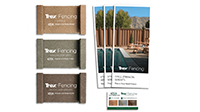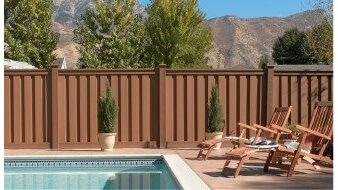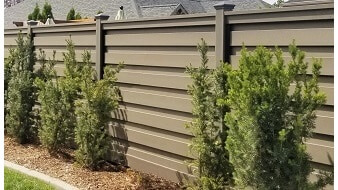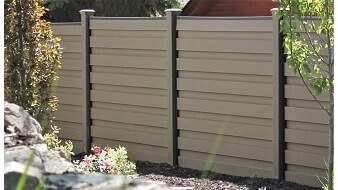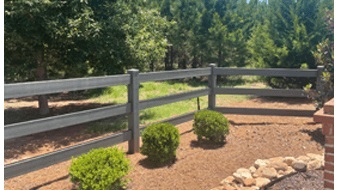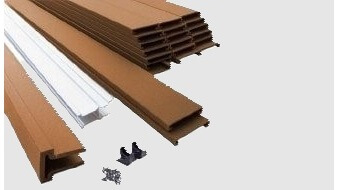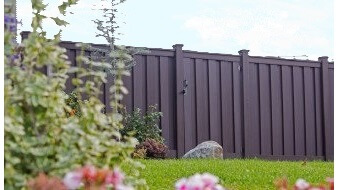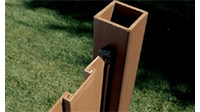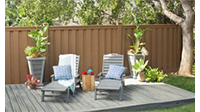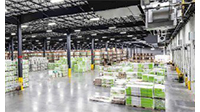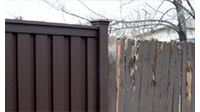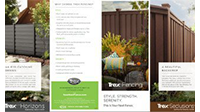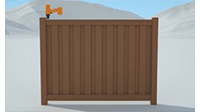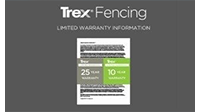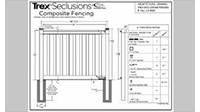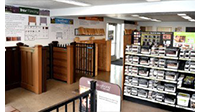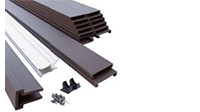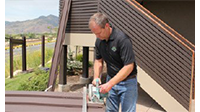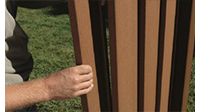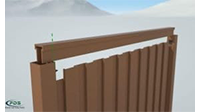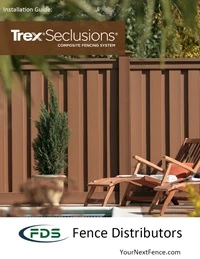Avoiding Underground Risks to Your Fence
While many fence owners are cognizant of the risks and damage types their fences face above the ground, there are some who may occasionally gloss over a different risk type: Underground fence damage. What you see on the surface of your fence doesn’t always match what’s going on underneath the soil it’s buried in, and even if you’ve taken great care of your visible fence posts, panels and other accessories, your system could still be at-risk of long-term concerns if these underground issues become significant enough.
At FDS, we’re proud to offer the very best in Trex composite fencing to all our clients, from our Seclusions vertical fencing setup through panels, gates and various other fencing components you may require. We’re also here to assist all our clients with the long-term care of any of their fencing products, with attention paid not only to the above-ground sections you can see, but also underground fence posts and related components that you should be keeping track of.
What are some of the most common ways fences can be damaged underground, and how can you avoid these risks throughout the year? Here’s a basic primer.
NOTE: THIS ARTICLE DOES NOT DISCUSS UNDERGROUND UTILITIES. CONSULT YOUR LOCAL UTILITY MARKING COMPANY PRIOR TO DIGGING ANY HOLES. OTHER CONSIDERATIONS MAY BE PROPERTY-SPECIFIC SPRINKLER SYSTEMS AND LOW VOLTAGE WIRING.
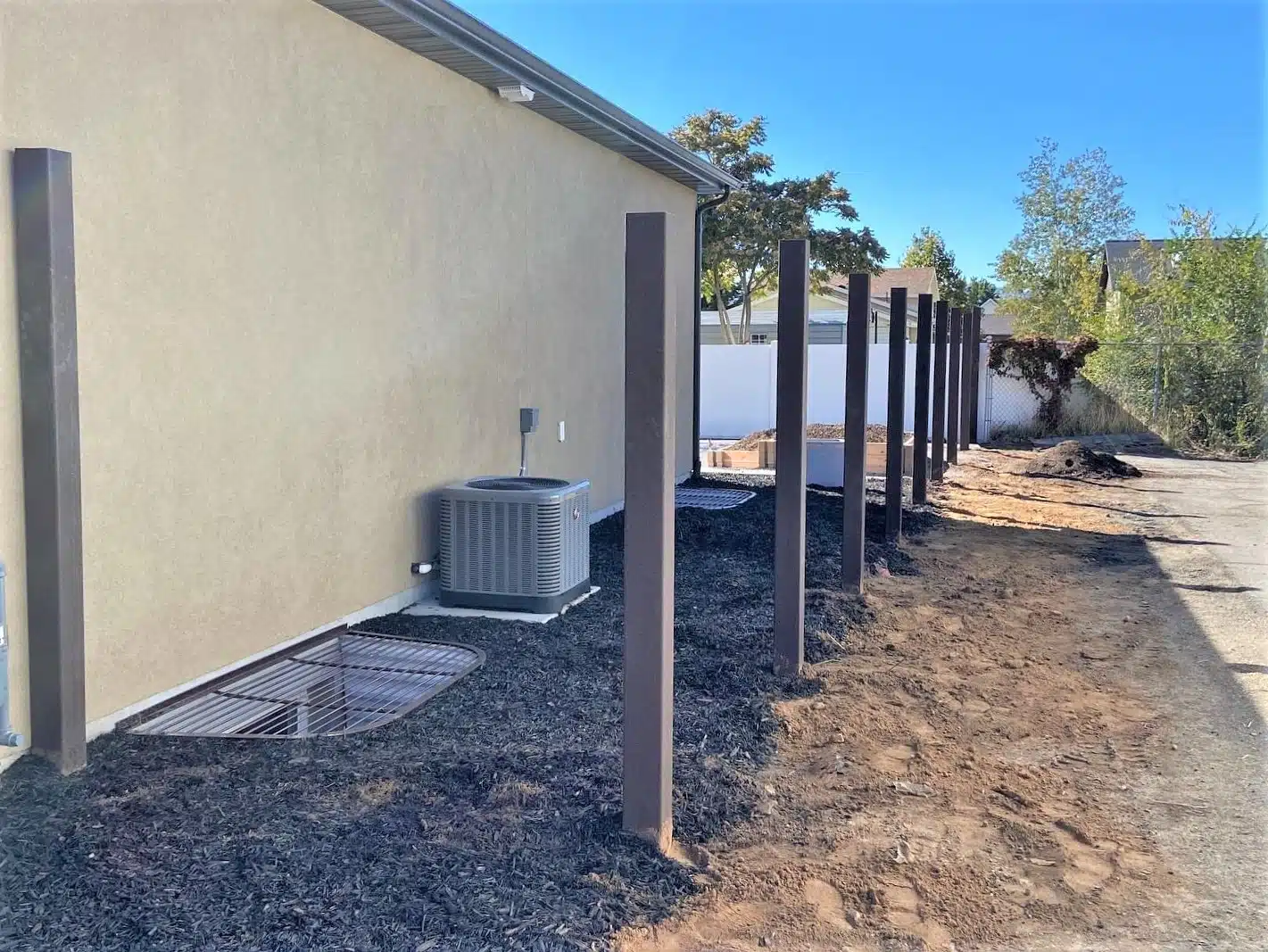
Frost Heave
For anyone who lives in a moderate or temperate climate and deals with frost during the colder months of the year, a condition known as frost heave has been known to impact fence posts and surrounding areas. Frost heave refers to a situation where the ground in which a fence is buried in freezes, expands and then thaws again. As the ground freezes, it seeps into any air pockets that may be present in your fencing components, causing them to expand as well.
This essentially creates an area where soil has been forced away from the fence post itself, meaning you have an open window for moisture to seep into, breaking down the structure of your fence components and causing long-term damage. And if this happens over a long enough time period, your fence posts will even move out of position entirely within the ground, causing major concerns with the fence above-ground as well.
This is why it’s so important to not only keep an eye on soil moisture levels around your fencing during colder months, but also keep track of snowfall in general — especially snow that may be piled up near any fencing you have. One specific strategy that some fence owners utilize here, especially if they’ve dealt with frost heave in the past, is adding sand and coarse gravel to the soil. This will act as insulation for your underground fencing components, and also help to slow down the soil movement that’s caused by frost heave.
In addition, good drainage from your fencing and the surrounding area is a must for avoiding this condition in general. Be sure that your fencing sections are properly sloped away from any low-lying areas that may collect standing snow or water during the winter weather seasons.
Burrowing Animals
In other cases, depending on the area in which you live and how common various forms of wildlife are, various burrowing animals may create underground damage to your fencing. Beavers, gophers and other burrowing animals can become a nuisance at times, especially if they’ve laid claim to the area around where your fencing is located.
The biggest issue here is that these animals will actually be digging at the posts themselves — while some may go for the gate areas if their home is in that immediate vicinity, others will simply target the posts themselves. This can lead to damage in and around fencing components, but it’s also worth noting that if they burrow under your fence itself, this can even cause real problems with the stability of certain sections of fencing.
The solution here is to bury posts in a strong, durable material, typically concrete. In addition, ensure posts are buried deeply enough that a little bit of activity from burrowing critters won’t be enough to dislodge them, and pick fencing posts with thicker diameters for added protection.
Tree and Shrub Roots
Yet another potential risk to your underground fence posts is the presence of roots coming from above-ground sources. Trees, shrubs and other related plant life have root systems that may be extensive and difficult to always keep track of. As these root systems grow and expand, they can wind up wrapping themselves right around your fence posts and begin pushing them out of the ground — not a good situation for either you or your fencing components.
The solution here comes back to fence installation and tree/shrub planting. Whenever possible, these items should be planted far away from your fencing, and especially any underground fencing components. Just like with fences themselves, good fence post installation means burying the posts deep enough that there’s no chance of them being dislodged by root systems or root growth in general (which is typically 8 feet down).
Value of Trex Composite Fencing
One other common underground fence risk is rotting of fence posts due to moisture and related factors — but because Trex fencing is a composite material that combines recycled wood fiber, plastic and modern sealing methods, it is resistant to moisture in general. In fact, it will not only resist moisture damage, but also last longer due to the fact that it doesn’t have a hollow interior or other potential areas for water and related elements to become trapped inside of it.
Trex fencing can stand up to most any climate condition without rot becoming an issue, which means that even if you choose to go with a more traditional fencing material for some sections of your fence, you’ll still find that Trex is a great option for any stairs, railing components and other smaller fencing fixtures.
For more on avoiding common underground fence damage issues, or to learn about how Trex fencing provides you with assistance here simply through its engineering, speak to the staff at FDS today.



